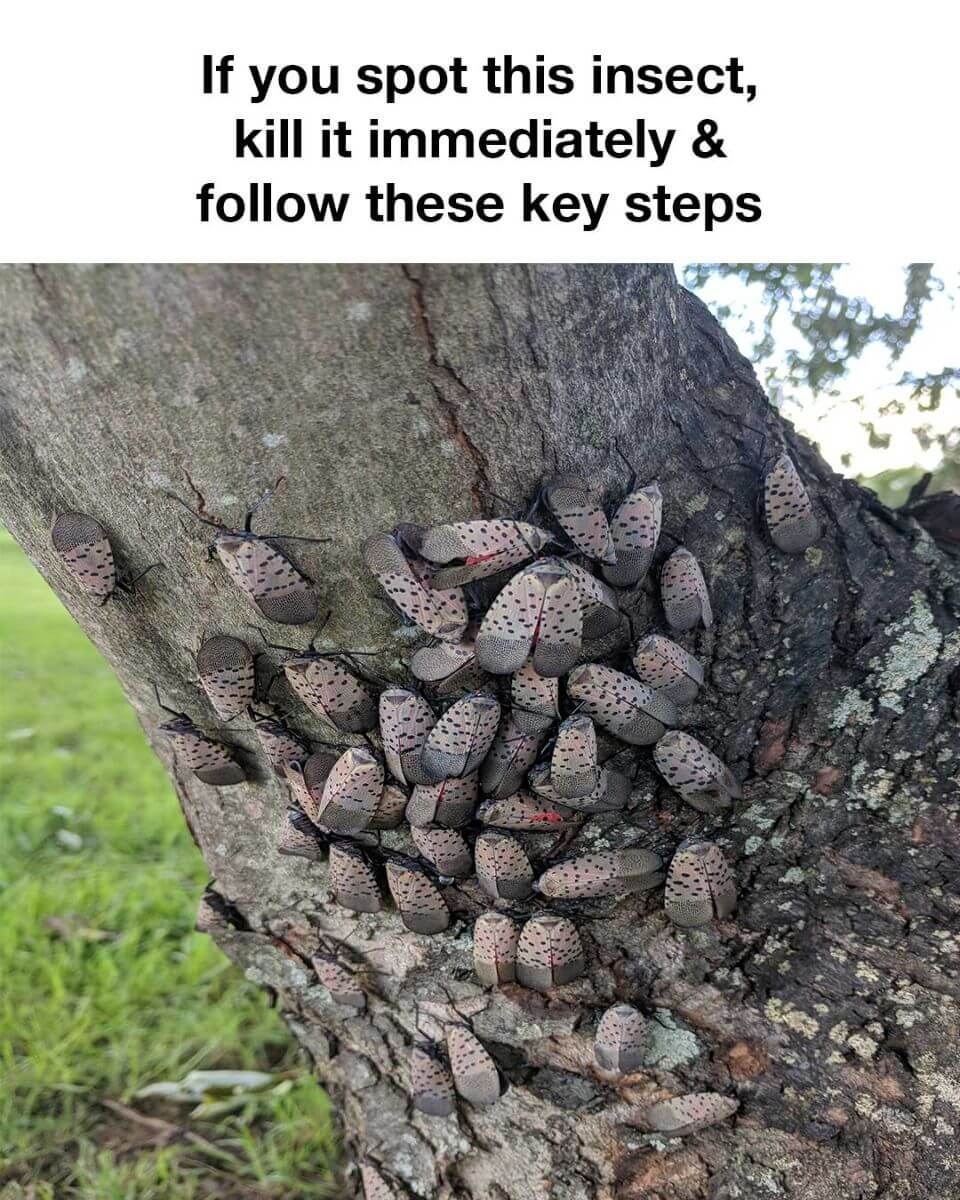An alarming insect has been spreading rapidly across various U.S. states in recent years, creating concern among farmers, environmentalists, and homeowners alike. The culprit? The spotted lanternfly (Lycorma delicatula), a visually striking but highly destructive pest known for its harmful impact on agriculture and the environment.
Here’s everything you need to know about this invasive species, why stopping its spread is essential, and what actions you can take to help eliminate it.
What Exactly Is the Spotted Lanternfly?
The spotted lanternfly is a type of planthopper originally found in regions of China, India, and Vietnam. It was first spotted in Pennsylvania in 2014 and has since expanded its territory to include states such as New Jersey, Ohio, and Virginia.
This insect poses a serious threat due to its feeding habits—it targets the sap of over 70 types of plants, including grapes, apples, pines, and maple trees. Its widespread diet makes it a major risk to both the agricultural and forestry industries across the U.S.
Adults are around one inch long and a half inch wide, featuring gray wings marked with black spots. Their hind wings reveal a dramatic contrast of red, black, and white. The nymphs start out black with white spots and later turn bright red before reaching adulthood.
Why You Should Kill Spotted Lanternflies on Sight
The damage caused by this insect is extensive and affects various sectors:
- Agricultural Threat: Lanternflies are especially dangerous to grapevines, and their feeding weakens plants, leaving them open to disease and greatly reducing harvests.
- Environmental Harm: They also attack native trees, which can upset the balance of natural ecosystems and lead to long-term environmental degradation.
- Problems Around Homes: Their sugary secretions, called honeydew, attract stinging insects and promote sooty mold. This mold can damage surfaces, plants, and make decks, outdoor furniture, and cars sticky and unsightly.
How to Eliminate Spotted Lanternflies Safely and Effectively
If you come across a spotted lanternfly, taking swift action is crucial. Here’s how to deal with them in a safe and responsible way:
1. Manual Elimination
- For adults and nymphs: Squash them using your hands (wear gloves) or a solid object. Gloves are recommended since the bug can leave behind a residue that may irritate your skin.
- For egg masses: Scrape them off any surfaces—such as trees, stones, or furniture—into a sealed plastic bag filled with rubbing alcohol or hand sanitizer to ensure the eggs are destroyed.
2. Sticky Tree Bands
- Wrap sticky bands around tree trunks to capture both nymphs and adult lanternflies as they climb. Keep in mind that these bands can accidentally trap birds and other animals, so it’s best to use a protective mesh or cage around them.
3. Insecticide Options
- Products like insecticidal soaps, neem oil, or stronger chemical treatments can help control infestations. Always use these responsibly, following label directions carefully—especially around food gardens or bodies of water.
4. Report Your Sighting
- If you live in an area where this pest is considered invasive, contact your local Department of Agriculture or cooperative extension office to report sightings. Authorities can provide guidance based on local infestation levels and containment plans.
By staying vigilant and taking these steps, you can help prevent the spread of this invasive species and protect both your property and the broader environment. Every single insect counts in the effort to stop the spotted lanternfly from causing even more damage.
